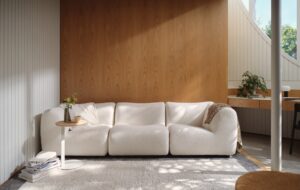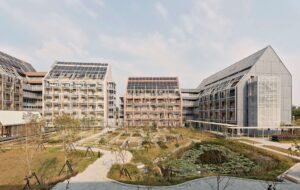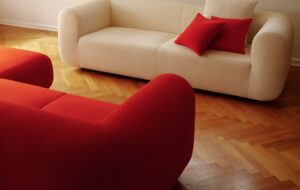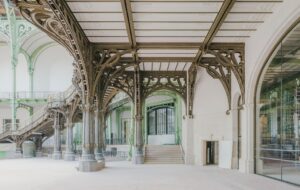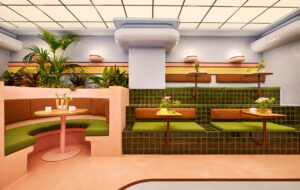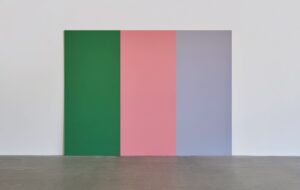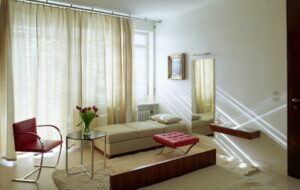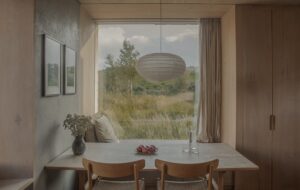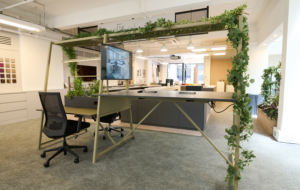
words Will Wiles
The design scene in Scotland has a spring in its step, thanks to the country’s resurgent national confidence, and in May the Six Cities Design Festival was launched at The Lighthouse in Glasgow.
As the name suggests, Six Cities was about more than just Glasgow – the other five festival venues were Edinburgh, Dundee, Aberdeen, Inverness and Stirling – but the city is the undisputed capital of Scottish design. “It’s like London was in the early 1990s,” says The Lighthouse director Nick Barley. “It’s really going places.”
Six Cities was the biggest design festival ever attempted in Scotland, a biennale on a national scale. The scope of its ambition speaks volumes about the confidence of Scottish design, and it’s significant that it carried full official government endorsement. There were early fears that the new Scottish National Party-led administration in Edinburgh might not look so kindly on design, but this does not seem to be the case, with culture taking on a prominent ministerial role in Alex Salmond’s slimmed-down government.
The Glasgow centrepiece of Six Cities was the Scottish Show at The Lighthouse, a celebration of the best new work in Scottish design. For most people, “new Scottish design” means the work of Timorous Beasties, the 17-year-old studio that is only now getting its due national recognition. Sure enough, the Beasties were a prominent presence in the Six Cities programme – in Dundee, they curated an exhibition of their influences, and at the Scottish Show they exhibited the new Moth lampshade, which reveals the bug when lit from within, and five new Toile designs – richly detailed scenic patterns with undertones of urban dereliction and decay – for a range of mugs.
The Timorous Beasties look – complex, pastoral imagery shot through with the sinister – was also present in the wonderful curtains and cushion covers by fellow Glasgow designer Showpony. Black-on-white patterns of flora and fauna were striking enough, but the folds conceal white-on-black creepy-crawlies. Another designer combining botanical patterns with hidden features was Johanna Basford, whose wallpapers respond to light, revealing new patterns in the dark at certain temperatures or under UV – flowers blossom and leaves grow, for instance.
Not everything was covered in foliage, though, and there was plenty of room for striking modernism. Particularly notable was Derek Welsh’s Paradox Box shelving, which takes strongly geometric shapes and bends them around a corner, and the smart, acute angles of Outgang’s wooden furniture.
Glasgow architecture practice Nord’s street furniture responded to Scotland’s smoking ban. England went smoke free on 1 July but the law has been in place north of the border since March last year, so the intended and unintended consequences of the ban are in clearer focus there. Nord’s wall-mounted ceramic ashtray is one result. It looks good, in the Victorian tradition of civic courtesies such as drinking fountains, and includes a windshield for tricky weather conditions. The practice has also designed similar subsidiary items, such as an umbrella holder and even an elaborate system of pumps and running water intended to keep pavements butt free. The latter device, which involves continuous sluicing of water over pavements, seems incredibly unlikely to catch on, but as Alastair Forbes of Nord points out, the ban has had some fairly unlikely consequences.
A big hit at the Scottish Show was Edinburgh duo Blue Marmalade’s Live Urchin light. This crystalline installation contains lights in its spikes that change colour, from white through purple to red, as people touch them or move nearby. These changes are remembered and repeated in patterns that change and decay over time. The sensitivity works according to the same principles as a theremin, and Live Urchin exercised an almost hypnotic hold over a big crowd on the show’s opening night.
For each of the participating cities, Austrian graphic designer Stefan Sagmeister created a nine-metre-high inflatable ape, with the six spelling out the phrase “Everybody always thinks they are right”. Originally designed for the Athens Olympics, their grumpy faces expressed the fact that they were dropped from their original purpose. “The monkeys kept getting angrier and angrier,” says Sagmeister. But the mascots had no reason to be sulky. Six Cities was a great success overall, but the real test is whether it happens again in 2009, and if so, with the same boundless ambition.

